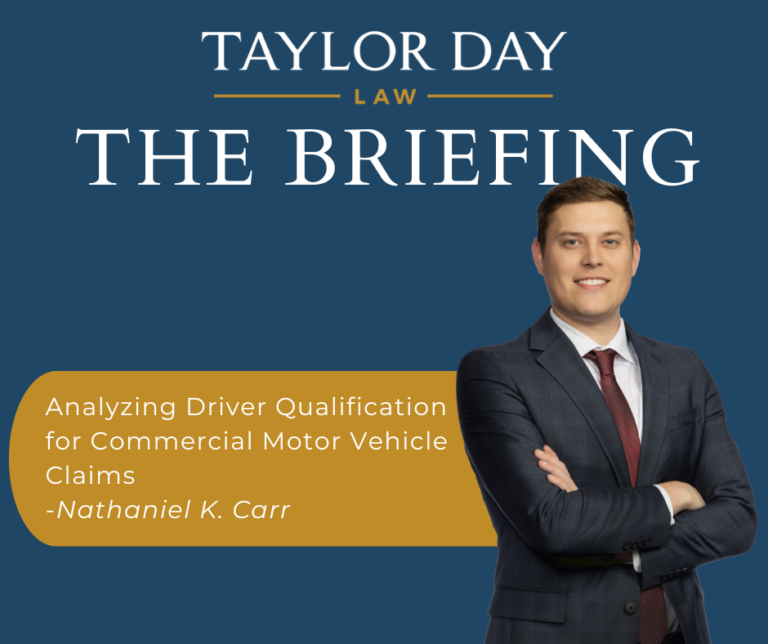Understanding what qualifies and disqualifies a driver of a commercial motor vehicle is a critical tool for defending against negligent hiring claims directed towards a motor carrier. The same understanding can and should also be utilized by motor carrier employers when making hiring decisions. The Federal Motor Carrier Safety Administration (FMCSA) establishes rigorous qualification standards for truck drivers to ensure safety on U.S. highways. These standards are outlined in Title 49 of the Code of Federal Regulations, Part 391, and are designed to assess a driver’s physical, mental, and professional competence. The qualifications include minimum age requirements, appropriate licensing, and sufficient physical health, reflecting the FMCSA’s focus on minimizing risks associated with operating commercial motor vehicles.
In general, a person is qualified to drive a commercial motor vehicle if he or she: (1) is at least 21 years old; (2) can read and speak the English language sufficiently to converse with the public, understand signage, and make entries on records; (3) has enough experience, training, or both to operate the type of commercial motor vehicle required; (4) is physically qualified by a medical examiner; (5) has a valid commercial driver’s license; (6) is not disqualified under federal guidelines; and (7) has passed a driver’s road test and has been issued a certificate or operator’s license. Each general standard contains detailed requirements which must be met as a condition of qualification. According to the FMCSA, it is both the driver and motor carrier’s responsibility to ensure a driver is properly qualified before operating a commercial motor vehicle. As such, motor carriers should conduct thorough independent investigations into prospective driver backgrounds.
Title 49 of the Code of Federal Regulations, Part 391.21 also identifies very specific standards for the driver application process which must be met before a driver is qualified. The application standards include, but are not limited to, detailed reporting of accidents and violations, the full extent of commercial driving experience including an applicant’s employers for the last 10 years, and reasons for any denials, revocations, or suspensions of a CDL. The motor carrier must then conduct an independent investigation into the details provided in the application pursuant to the FMCSA. This includes contacting all previous employers, obtaining independent motor vehicle records, performing comprehensive background checks, and conducting a drug and alcohol reporting screen through the Drug and Alcohol Clearinghouse. The FMCSA requires the motor carrier to obtain updated driving records as well as conduct an annual review for a driver to remain qualified.
It is equally important, both for defending against negligent hiring claims and for motor carriers facing hiring decisions, to understand when a driver is disqualified from driving a commercial vehicle. The FMCSA’s standard for disqualification of commercial vehicle drivers are outlined in Title 49 of the Code of Federal Regulations, Part 391.15. In general, a driver is disqualified if the driver drove a commercial motor vehicle with a blood alcohol concentration of 0.04 or more; left the scene of an accident while operating a commercial motor vehicle; transported an unlawful item or substance; was texting while driving a commercial motor vehicle; violated out-of-service orders; or engaged in a felony while driving. The disqualification period a driver may face can vary depending on the severity of the violation and the driver’s past record, however disqualification can range from 60 days to 5 years.
As a practical example, consider Drivers A and B. Driver A was fully qualified, submitted an application in accord with FMCSA requirements, and was thoroughly vetted by the hiring motor carrier. On the other hand, Driver B appeared fully qualified on the application but the hiring motor carrier did not investigate his driving history. As it turns out, an investigation would have revealed Driver B was disqualified 30 days prior for violating an out-of-service order. Both were involved in separate accidents and both hiring motor carriers now face negligent hiring claims. Driver A’s motor carrier could support a dispositive motion as it relates to the negligent hiring claim by showing complete compliance with the FMCSA’s standards for driver qualification. Yet, Driver B’s motor carrier will be on the hook for negligently hiring a driver who was disqualified.
In conclusion, success when defending against negligent hiring claims begins with the shared responsibility of a driver and motor carrier to fully comply with the requirements set forth in Title 49 of the Code of Federal Regulations, Part 391. The attorneys at Taylor Day Law carefully evaluate the qualifications of commercial motor vehicle drivers under these rules and will continue to employ aggressive strategy to effectively protect their clients from unsupportable negligent hiring claims.

